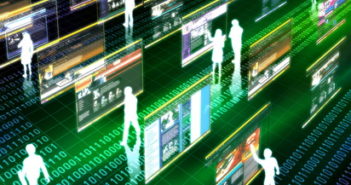Everyone has seen videos of monkeys using sticks as tools in the jungle. But how many of us would believe that the sticks would go off on their own to hunt for bananas without the monkey? But this is precisely what some people are predicting when it comes to automated computer trading.
Back in the 1980s and 90s, when banks of currency and commodity traders sat at their desks with a telephone handset on each ear, few traders really used computers to help them make decisions whether or not to make a deal. Most used their Windows 3.0 to enter the trades they had completed as a means of recording those deals and sending them off to their back office for processing, but few, if any used them for decision making.
Back in the day, few traders were “technical†traders. Most traded by the fundamentals—the constant stream of data that flowed in from the international financial news services. However, the idea that charts and computers could assist in the prediction of future market direction did begin to take hold, and more and more traders became informed about pattern recognition and statistical data analysis.
Post-2000, most traders were aware of moving averages, RSI, MACD, and other computer-generated market indicators. Additionally, terms such as ascending triangles, head-and-shoulders, and diamond formations became more common on the web pages of financial market commentators.
In an effort to move this computerized “technical†analysis to the next level financial institutions began to experiment with automated algorithmic, or ‘algo’ trading, where computers not only recognized chart patterns but could also make trading recommendations.
The downside to this type of computerized or “bot†trading is that in order to perform any action, a computer has to be programmed to recognize that action. For a computer to identify a pattern, that pattern must first be programmed into the code of the program that the computer uses. An example of this is a human-computer battle between IBM’s “Big Blue†chess program, which persistently failed to beat human grandmasters. The humans were just too good at acting creatively and managing with unpredictability. This same computer shortcoming also applies to financial bot trading.
Computers win hands-down over humans when it comes to the rapid recall of historical data. However, when something unexpected happens in the market, or indeed in the world, the immediate assimilation of new circumstances is regularly better handled by humans than computers.
Powerful financial institutions have thrown millions of dollars into Holy Grail financial programs that are intended make buy and sell decisions on the basis of global economic and political information. However, these programs have consistently failed to make profits when faced with entirely original events such as the US Sub-prime debacle, or even the rise of unpredictable individuals such as US president Donald Trump.
There is no question at all that there is a place for computerized trading programs, but for the optimal results, the signals can only be managed by human operators.



